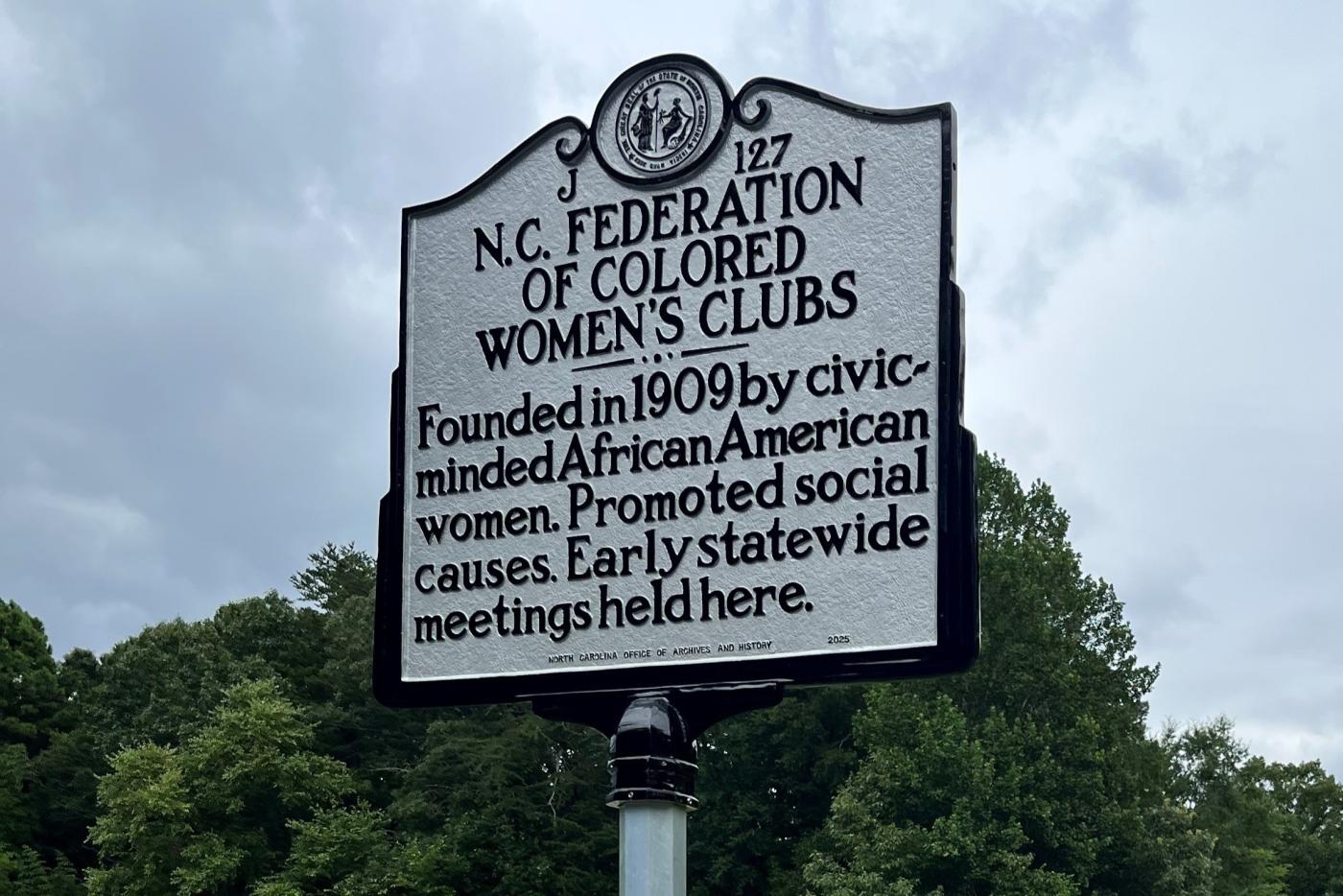Location: Hwy 70 at the Charlotte Hawkins Brown State Historic Site, Sedalia, NC
County: Guilford
Original Date Cast: 2025
In the 1890’s women formed national women’s club federations, most of which were dominated by educated, upper-middle-class, northern women. Few of these organizations included a bi-racial membership. The Black women’s club movement rose in response and the segregated clubs produced vibrant organizations that promised racial uplift, civil rights, and equal rights for Black women.
In 1895, Josephine St. Pierre Ruffin issued a national call to organize the National Association of Colored Women’s Clubs, by 1896 it was formed, and Mary Church Terrell was voted as the first president of the organization. During the next ten years, the NACWC became involved in campaigns in favor of women’s suffrage and against lynching and Jim Crow laws. By 1909, Dr. Charlotte Hawkins Brown, Minnie S. Pearson, Cottie Dancy Moore, Maggie Jones, and Julia M. Warren, would follow the example of the NACWC and found the North Carolina Federation of Negro Women Clubs as an outgrowth of the National Association, developed to uplift the finer “Negro” womanhood. The federation consisted of social service organizations focused on issues that affected women, children, and communities of color in North Carolina.
The North Carolina Federation of Colored Women’s Clubs was organized because of a “necessity for the united effort in promoting race improvement in general by helping improve moral standards, social development, political and educational advantages in the home and community.” The Constitution and By-Laws written at inception deemed that membership extended to “any club in the state of North Carolina organized for the purpose of improving the status of women and youth.”
The group’s motto, “Lifting as we climb,” helps to illustrate the philosophy that drove the generations of women who participated in the Federation’s various clubs throughout the state. Members fostered the importance and value of human life and the constant desire for acceptance and worth. The issues that are closest to the heart of the NC Federation include fundraising for educational scholarships, providing Braille resources for the blind, raising awareness for sickle cell disease and HIV-AIDS, advocating for children, youth, and senior citizens, and supporting the NAACP. The organization also worked with the NC General Assembly to establish the North Carolina Industrial Home for Colored Girls (also known as the Efland Home for Girls) in 1921.
REFERENCES
Constitution and By-Laws of North Carolina Federation of Negro Women's Clubs, Young Adult and Youth Clubs, Inc. North Carolina Federation of Negro Women's Clubs. June 1992.
Jones, Beverly W. “Mary Church Terrell and the National Association of Colored Women, 1896 to 1901.” The Journal of Negro History 67, no. 1 (1982): 20–33.
Lerner, Gerda. “Early Community Work of Black Club Women.” The Journal of Negro History 59, no. 2 (1974): 158–67.
Kendrick, Ruby M. “‘THEY ALSO SERVE’: THE NATIONAL ASSOCIATION OF COLORED WOMEN, INC.” Negro History Bulletin 17, no. 8 (1954): 171–75.
Wadelington, Charles W. Charlotte Hawkins Brown and Palmer Memorial Institute: What One Young African American Woman Could Do. Chapel Hill: University of North Carolina Press, 1999.

